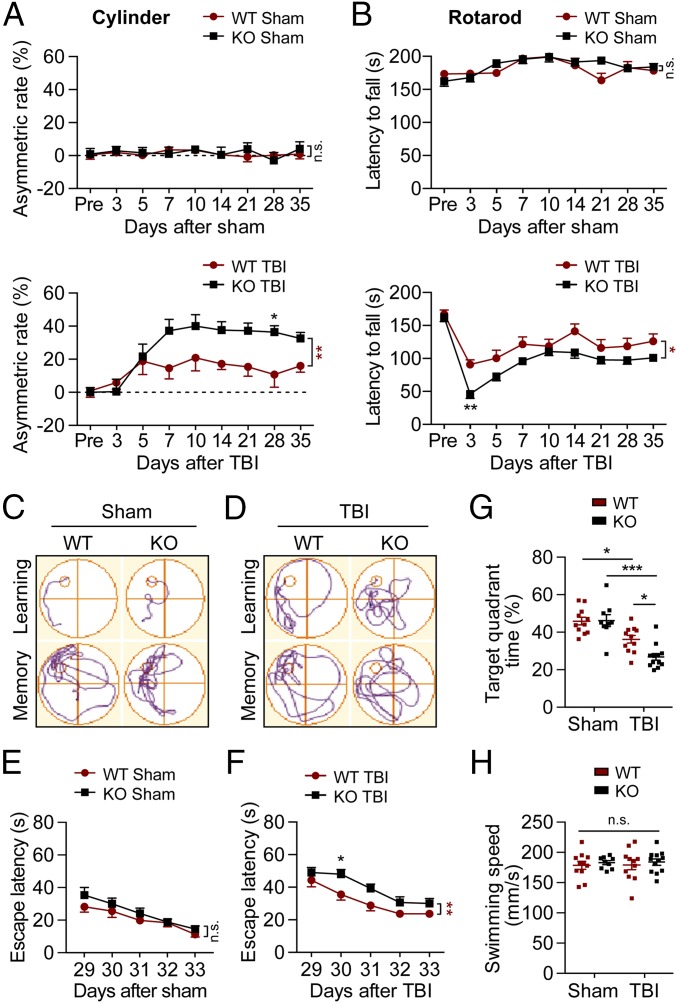Fig. 1.
Deletion of tPA exacerbates long-term behavioral impairments after TBI. WT and tPA-KO mice were subjected to sham injury or unilateral CCI (defined here as TBI) in the right hemisphere. (A and B) Sensorimotor functions were evaluated before (3 d of pretraining before CCI) and up to 35 d after unilateral TBI by calculating forelimb asymmetry in the cylinder test (A) and the latency to fall in the rotarod test (B). TBI increased asymmetry and decreased latency to fall; sham operations had no effect. (C–H) Long-term spatial learning (escape latency), spatial memory (target quadrant time), and swim speeds were assessed by the Morris water maze test. (C and D) Representative images illustrate swim paths on days 33 (learning) and 34 (memory) after TBI (C) or sham operation (D). (E–G) Escape latency and target quadrant time were not affected by sham operation but were increased after TBI, and even more in tPA-KO than in WT mice. (H) Swimming speed was unaffected by tPA-KO or TBI. Data are presented as mean ± SEM. n = 9–12 per group. *P ≤ 0.05, **P ≤ 0.01 for KO vs. WT mice by two-way repeated-measures ANOVA followed by Bonferroni post hoc correction in A, B, E, and F (see asterisks next to brackets on the right). *P ≤ 0.05, ***P ≤ 0.001 by two-way ANOVA followed by Tukey post hoc correction in G and H. n.s., not significant. See SI Appendix, Table S1 for statistical details for all figures.

